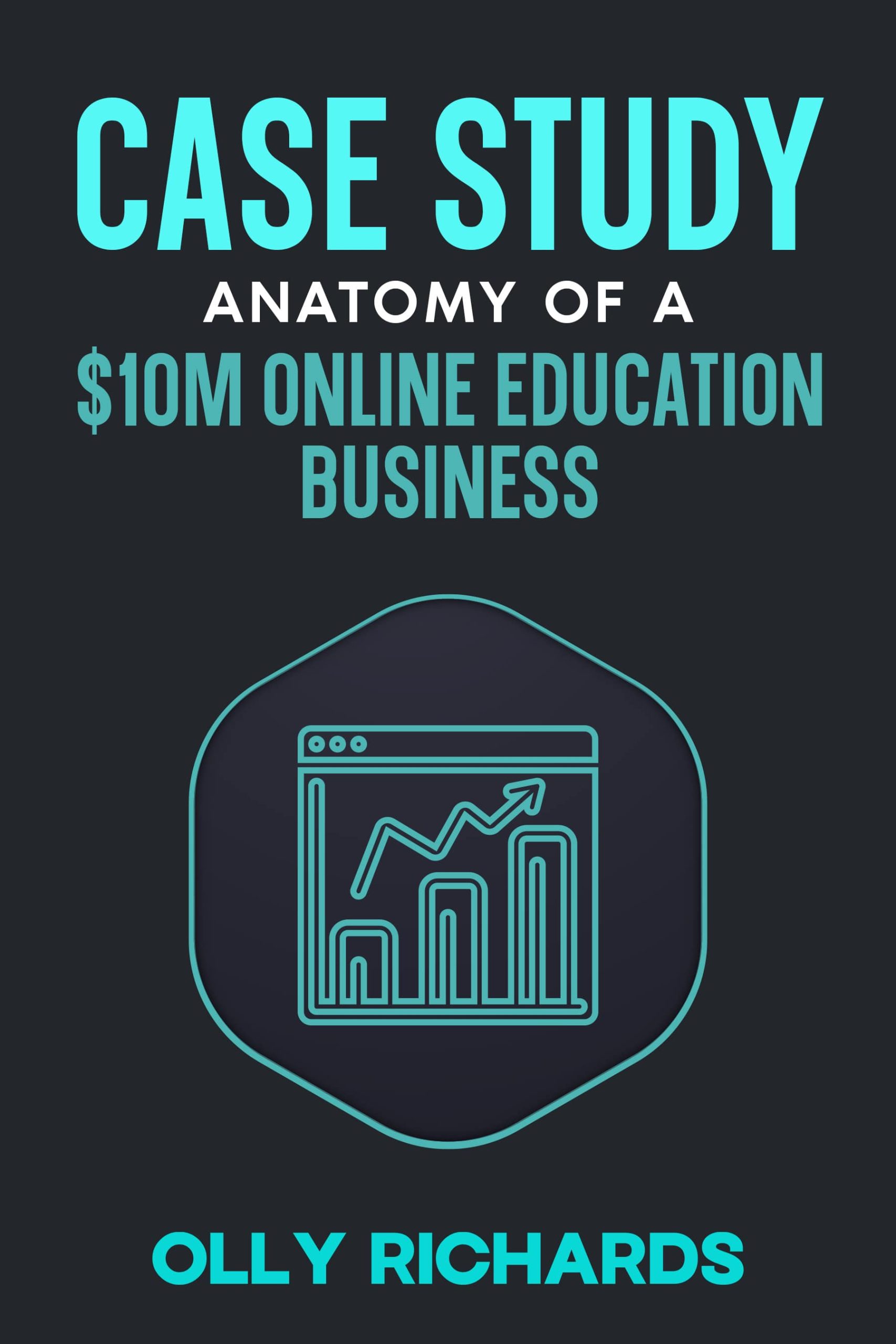A few weeks back, I sent a newsletter called: “49 things I’d teach my daughter about business.”
And at the end, I asked you to vote on your favourite ideas from piece.
Sure enough…
One idea rose to the top.
And, by jove, you’re a smart bunch…
Because that top-voted idea is a real belter!
And honestly, for anyone who pays attention, understanding this concept is worth many millions of dollars, by unlocking huge amounts of hidden customer value...
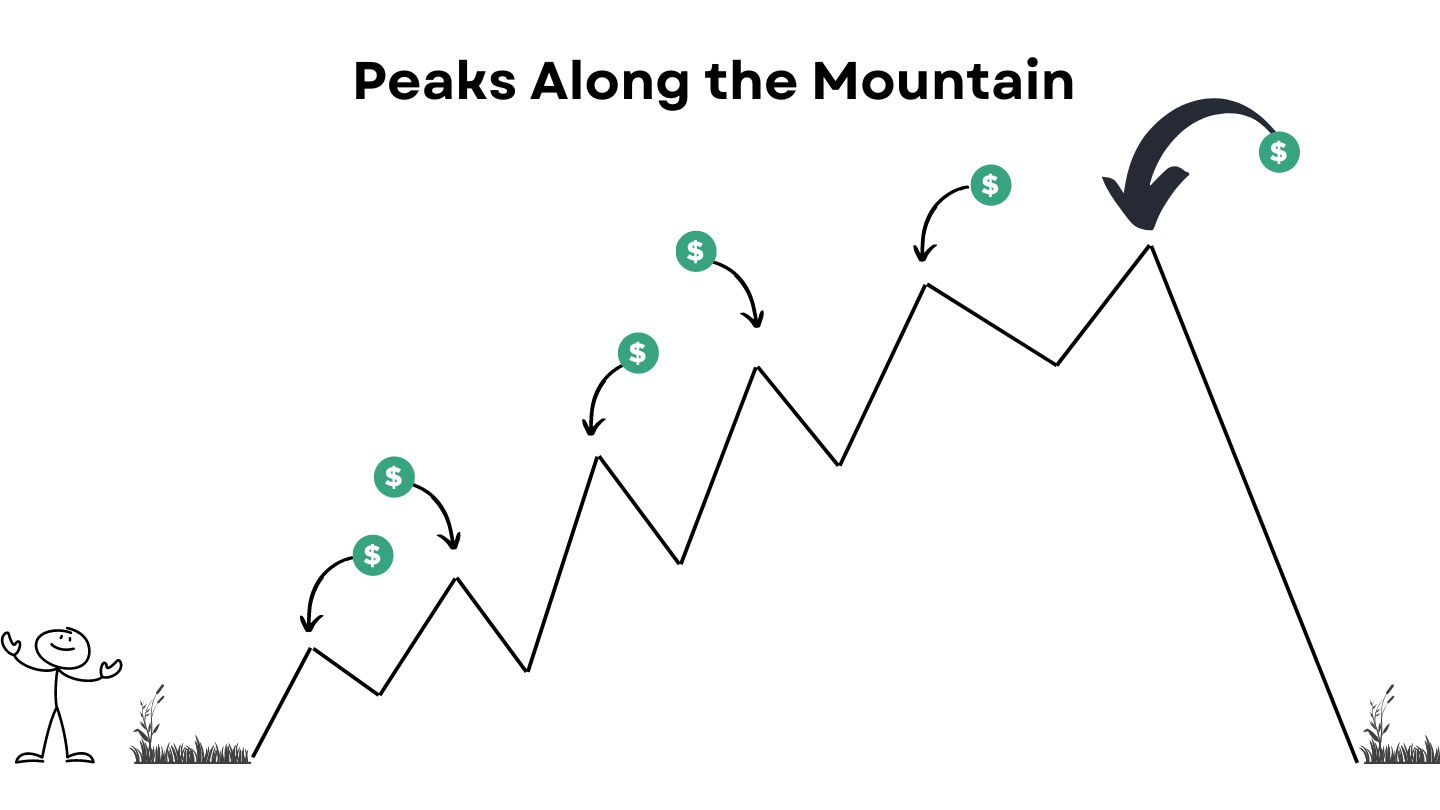

I first came across this concept in 2015 - a throwaway comment from somebody in a conference talk.
And in the years that followed, I kept this idea top-of-mind as I went about building the product ecosystem at StoryLearning.
It made us millions.
Who knows what would have happened if I hadn’t heard about it...
Well, I do know, actually. We’d be significantly poorer.
But before I explain exactly what it is…
Let’s set the stage…
Locked Down and Feeling the Pressure
It was April 2020, and I was in the same place as everybody else…
Sat on my ass at home, wondering WTF was going on.
I was holed up in our North London flat, juggling:
- Homeschooling
- Fully-masked runs to the supermarket
- Trying to keep my business going from a corner of my daughter’s bedroom
Life had never been more stressful.
While all the time…
Everyone on social media was banging on about
“How wonderful it is to finally have free time, do some baking, and learn a new skill!”
I felt like I was living in a parallel universe to everyone else.
And then eventually...
I succumbed to the comparison trap…
“I should be learning something new, too!”
So, I decided to scratch a multi-year itch and learn to draw.
I started clicking on various Instagram ads that were popping up in my feed.
I bought two courses.
And this is the tale of what happened…
A Tale of Two Courses
The first course I bought was from a Scandinavian illustration guru.
His drawings were spectacular.
The premise of the course was: Learn to draw anything!
That’s what sold it for me. Learning to draw like him would have been awesome.
Sure enough, what he tried to do in the course was show me how to draw anything, just like him.
He would say things like “Just imagine it and you can draw it!”
But, of course, I couldn't draw it.
I was useless.
(That’s why I bought the course.)
I got frustrated and quit.
The second course was completely different.
It was a $20 ebook, entitled “How to draw stick figures.”
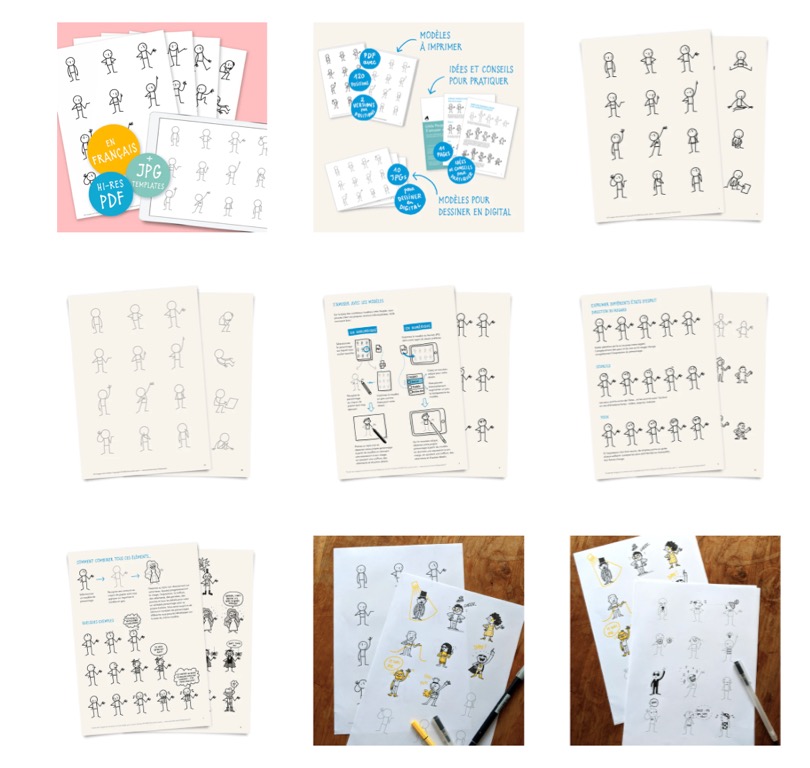
The whole premise was that you learn to draw stick figures with different poses and emotions.
Nothing complex at all.
None of the “draw literally anything! you can do it!” nonsense from the first course.
Just learning to convey different moods through stick figures.
(It’s amazing what you can convey with a few lines!)
I absolutely loved the course.
Why?
Because I could do it!
It was specific and achievable.
After a few days, I was pretty good at drawing stick figures, putting together these character scenes that felt really advanced! It was a real win.
But here’s what’s key…
You know what I felt, at that point?
“I want to learn more!”
I was on such a high from my stick figure escapades that she could have offered me a rusty old kitchen sink for sale, and I would have snapped it up faster than a toupee in a hurricane.
See where this is going?
Peaks Along The Mountain
The mistake of the first course was to try to offer the a complete solution to my drawing ambitions.
The course was selling the Summit of the Mountain:
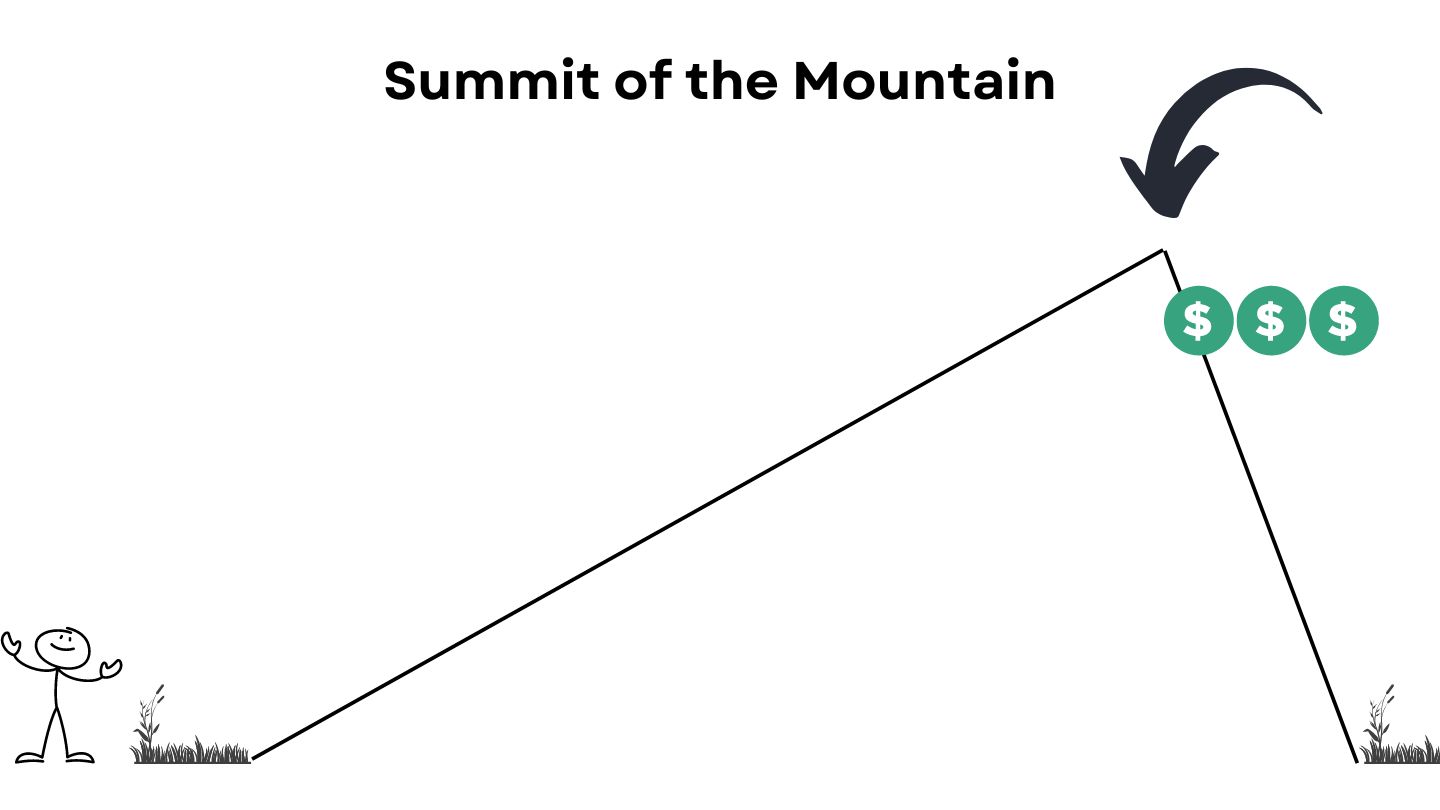
As it happened, the course wasn’t much good.
But…
Imagine if it had been great…
And by the end I could draw exactly like the guru…
What then?
What more could he have offered me?
Nothing.
Job done.
Loop closed.
Signed, sealed and delivered.
See, when you reach the summit of the mountain, there’s nowhere else to go. This is business model suicide.
The second course, however, didn’t sell the summit.
The second course sold the first peak along the way:

Small peaks along the way are more achievable, so you can get results more easily.
When you get results, you’re more motivated.
When you’re motivated, you want to keep learning.
And if you’ve only reached the first peak along the way… there’s pleeeenty more to learn.
Also - by this point, you’ve found yourself a guru for life. You ain’t going anywhere else.
What does this mean for a business?
Customers coming back again.
And again.
Spending a lot more $$$, leaving rave reviews, and referring friends along the way.
Want some of that?
How To Do This The Wrong Way
What I’ve just described is follows:
- If you offer the complete solution to a problem (the summit of the mountain), it’s harder to sell and leaves you with limited options for what to offer afterwards.
- If you offer a series of smaller, sequential solutions (peaks along the way), you’re making it easier to acquire customers, get results, and leave yourself plenty of options for repeat customers.
Let’s illustrate how this mistake might play out in different niches.
Starting with yours truly…
(After all, mistakes are my speciality!)
Language Learning - when I made my first language learning course back in 2014, the offer was “Learn all my secrets for learning a language fast!”
Great offer, great course. And people loved it. But having revealed all my secrets, what am I supposed to offer next?
Make Money Online - In the MMO space I forever see people selling the “Complete system that will allow you to quit your job and retire on the beach!”
Main problem with this is that it's not believable. (Or achievable for the most part.) What's far more believable is what Noah Kagan sells with his Monthly 1k course. (No endorsement.) It's a lot more achievable to make 1k than it is to retire in the Bahamas. And once you make 1k… guess what? You probably want to make 2k.
Fitness - Everyone is selling “Get your dream body!” A more interesting introductory offer though would be “Control your eating in 30 days”.
This is not only more believable, but it differentiates you from the competition, gives you a realistic time bound objective, and leaves the door open to many more things.
Memory - In the memory space, “Learn to remember anything on command!” is commonplace.
Far better to start with a specific step, like learning the Major Method. (Number / letter association.)
Photography - You often see offers like “Become a pro photographer!” This is fine, but also hard for most people to imagine.
What if instead the first course you sold was: “Get your first photography client!” or “Make your first $100 online by selling to stock photo sites!”
I’m just spitballing here…
But you get the idea.
Remember, if you’re selling the peak of the mountain, you’re going to get:
- A harder job converting people into customers
- Lower student completion rates
- Less repeat custom
- Less opportunity to form teacher <> student bond
However, by selling the first peak along the way, you’re:
- Converting customers more easily
- Creating wins
- Building trust
- Creating repeat customers
Not a Value Ladder
Some people might compare this “Peak Along The Way” concept to a value ladder.
But I think it's quite different conceptually with the value ladder.
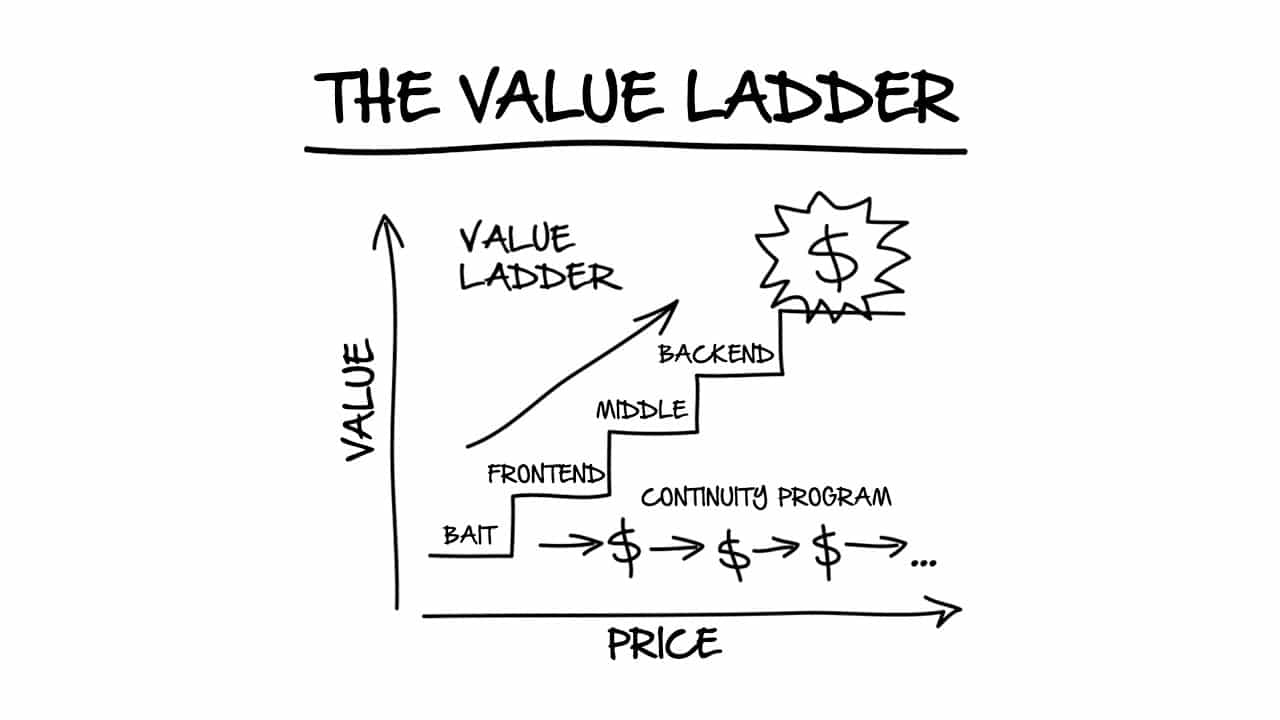
Source: Dot Com Secrets
With a value ladder, the idea is that you are trying to acquire a customer with a cheap offer (e.g. $7 ebook), in order to build trust and upsell them to increasingly more expensive stuff (e.g. $2,000 course).
Leave aside for a minute that “value ladders” are fundamentally flawed as a concept…
(I can tell you more about this later if you like)
The value ladder is the wrong way to think about education businesses, where we're usually not trying to sell crazy high-ticket offers…
But rather we want to create loyal customers who keep coming back.
So rather than trying to “escalate” customers…
We want to lead them from peak to peak, on a gradual journey towards the final destination, potentially at the same price point throughout.
This is important to understand, because high-ticket offers are not suitable for a lot of education businesses.
The “peaks” model allows you to generate a higher LCV though repeat custom, instead of aggressively escalating to a “big money” event.
And the great thing about this approach is it aligns you energetically with how an educational process actually works…
Everyone wants the “dream transformation”, but the way we learn hard things is by progressively chipping away at smaller goals.
For me, this represents perfect alignment of business model <> educational outcomes.
For example…
At StoryLearning, we have a high repeat customer rate.
In part, this comes from the strong “Brand DNA” that I describe in chapter one of the $10MM case study.
But it also comes from selling the peaks along the mountain climber… not the summit.
Earlier, I told you how my first course was selling the complete solution: “How to learn any language fast!”
How different things look now…
Our main language programme now come in six levels from beginner to advanced.
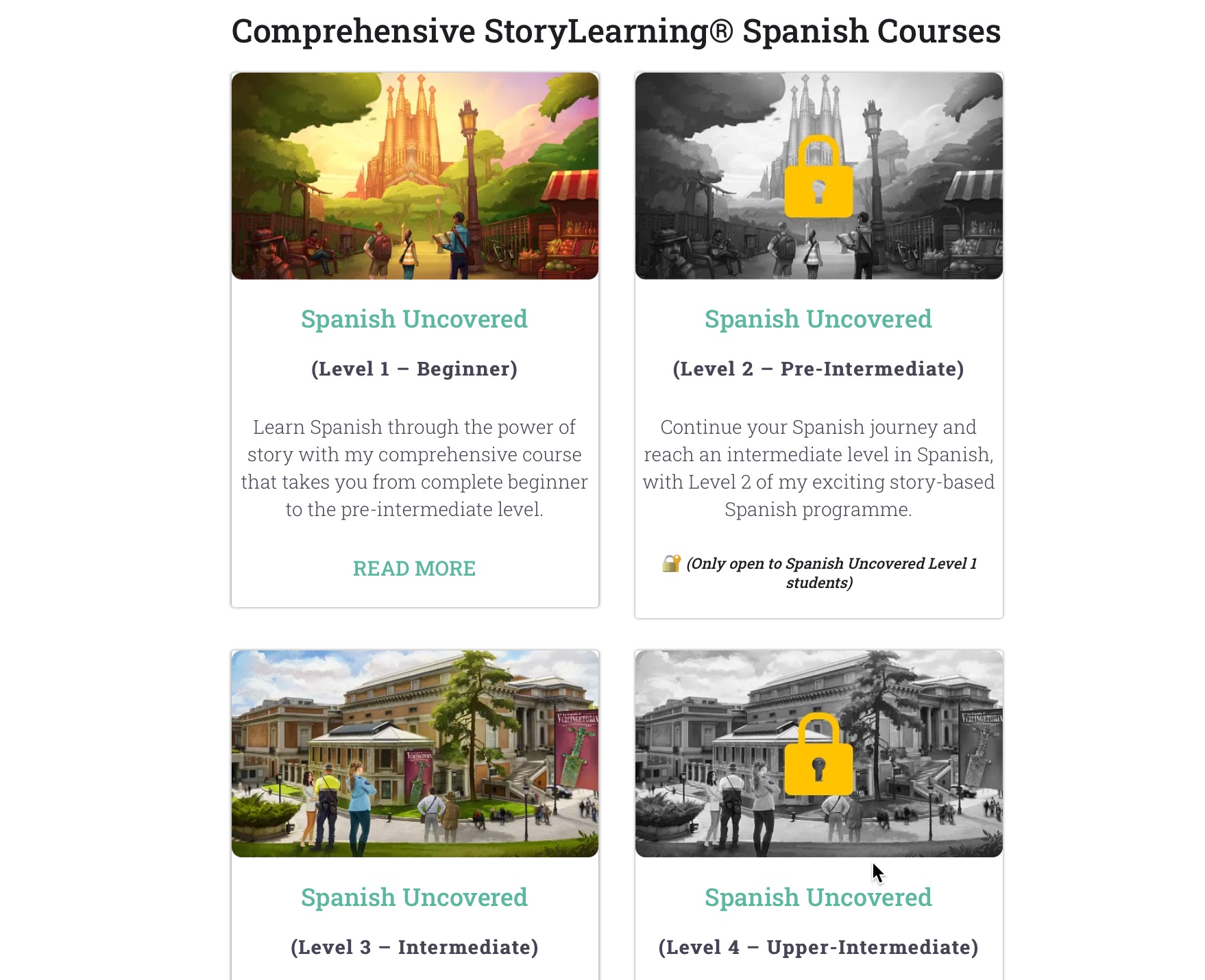
This lays out a very clear path - you start at level one, and work your way upwards.
Get started, put some wind in your sails, and then carry on until level six. Each course costs the same amount - there’s no price escalation.
But there’s more…
In reality like learning a language is not that simple, and you'll take various diversions along the way - focusing on certain skills like in conversation or grammar.
But when you do take those diversions…
We’ve developed our extensive product ecosystem is ready and waiting with the products you need to learn that stuff.
More peaks along the way.
Whatever you want to call them.
Which leads to more revenue for us.
Here’s a delightful image to leave you with…
The Value Ladder model assumes that marriage is the ultimate goal, and uses dating as the means to get there.
The Peaks Along The Mountain model assumes that...
Dating is more fun… and should carry on for as long as possible… whether you’re married to someone else or not!
You could think of it as the “French value ladder”.
What Do Your Peaks Look Like?
In education, everyone wants the “miracle transformation”.
But the way they get there is through consistent steps - laying one brick after the other until the wall is complete.
Smart businesses build their business model to align with the learning process, by offering peaks along the mountain, instead of the summit.
If you’re new to business, I hope this will be a useful guide as you build out your product ecosystem.
I feel fortunate I came across this concept fairly early in my journey.
If you’re more established, this may throw up a bunch of difficult questions. One conclusion may be that your business model isn’t really set up as well as it could be.
Either way…
Better to start thinking about this stuff now!
So, grab a pen and paper…
Do a bit of blue sky thinking…
What would your offer look like if it were conceived as a series of peaks along the mountain?
CASE STUDY: Blueprint Of A $10m Online Education Business:
Join my free newsletter for online educators and I'll send you the case study immediately...
We will protect your data in accordance with our data policy!
